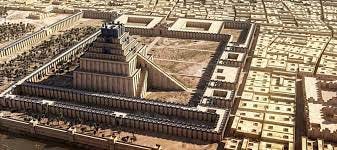The Tower of Babel. The Stele of Hammurabi. Hammurabi in general. Those are the three things I could say I knew about Babylon with confidence. I mean, listen. Ancient Babylonia was an incredibly important city, one that flourished from the 2nd millennium BC to the early 1st millennium alongside Ancient Egypt.
What’s interesting about Babylon, however, is how little we know of the city and its happenings from the perspective of the Babylonians themselves. Most of what we know comes from the Bible or the Greco-Roman perspective. Now, why is that? Well…
You see, most of what we have in the name of the Babylonian records were discovered around the 19th century and took the form of several ( by which I mean thousands) of unbaked clay tablets which were excavated and sold on the open market by looters from across the globe. Museums, of course, attempted to purchase as many of them as possible, but have only recently started to reassemble and decipher what they say. What does that mean? It means that while we currently don’t know much from the Babylonian perspective, we’re well on our way to greater understanding!
Babylon always had a bit of a flooding issue. Unlike most other states, however, that would alter the location of cities or buildings after a collapse, Babylon built on top of its ruins. This means that the city of Babylon was made up, quite literally, of layers, making it difficult for archeologists to excavate and accurately identify the remnants of early Babylon.
This brings us to the two aspects of Babylon that I want to focus on today because, honestly, there’s so much to cover when it comes to this city, I had to narrow it down for the sake of my sanity. One, was there a Tower of Babel? Two, where the hell are the hanging gardens of Babylon? The vague answers to both these questions highlight the problem I set forth at the beginning.
You see, the gods of Babylon were thought to inhabit mountains. More specifically, the very top of mountains. This makes sense since mountain caps were the highest point one could reach on foot. In an attempt to imitate and recreate these natural structures, the Babylonians built ziggurats (large temple structures) to represent the mountainous homes of their Gods. Unlike pyramids, these structures did not feature a hollow centre and were made entirely of solid brick. Most of these ziggurats have been destroyed by the elements. However, many modern scholars have postulated that these ziggurats, more specifically, the Etemenanki (dedicated to Marduk, the Chief God of the city of Babylon), might have inspired the tale of the Tower of Babel.
Similarly, the Hanging Gardens of Babylon might not have been in Babylon at all. Scholars have noted the confusion between Babylon and Nineveh. The latter was often referred to as “Old Babylon” in Assyrian sources, and King Sennacherib (its ruler) was known for his lavish gardens. Moreover, while archeological evidence for the hanging gardens at Babylon is limited, archeologists have found traces of complex aqueducts and screws to raise the water to higher levels of the gardens at Nineveh. So… really… who’s to say we didn’t get wrong Babylon?
Honestly, all this does is highlight just how much we have yet to learn about Babylonia, its sprawling civilization, and the people who lived there. I could, honestly, keep writing about things that have been uncovered and conclusions that have been drawn, but I’d rather wait it out and see what historians have to offer to the conversation a few years down the line.
PS: There was also a great deal of confusion between King Nebuchadnezzar II and King Sennacherib because of their dealings with Jerusalem. The former raided the city. The latter besieged the city.
PPS: It is also due to Nebuchadnezzar II's sacking of Jerusalem that Babylon gets such a bad name in the Bible, not to mention Nebuchadnezzar himself.






